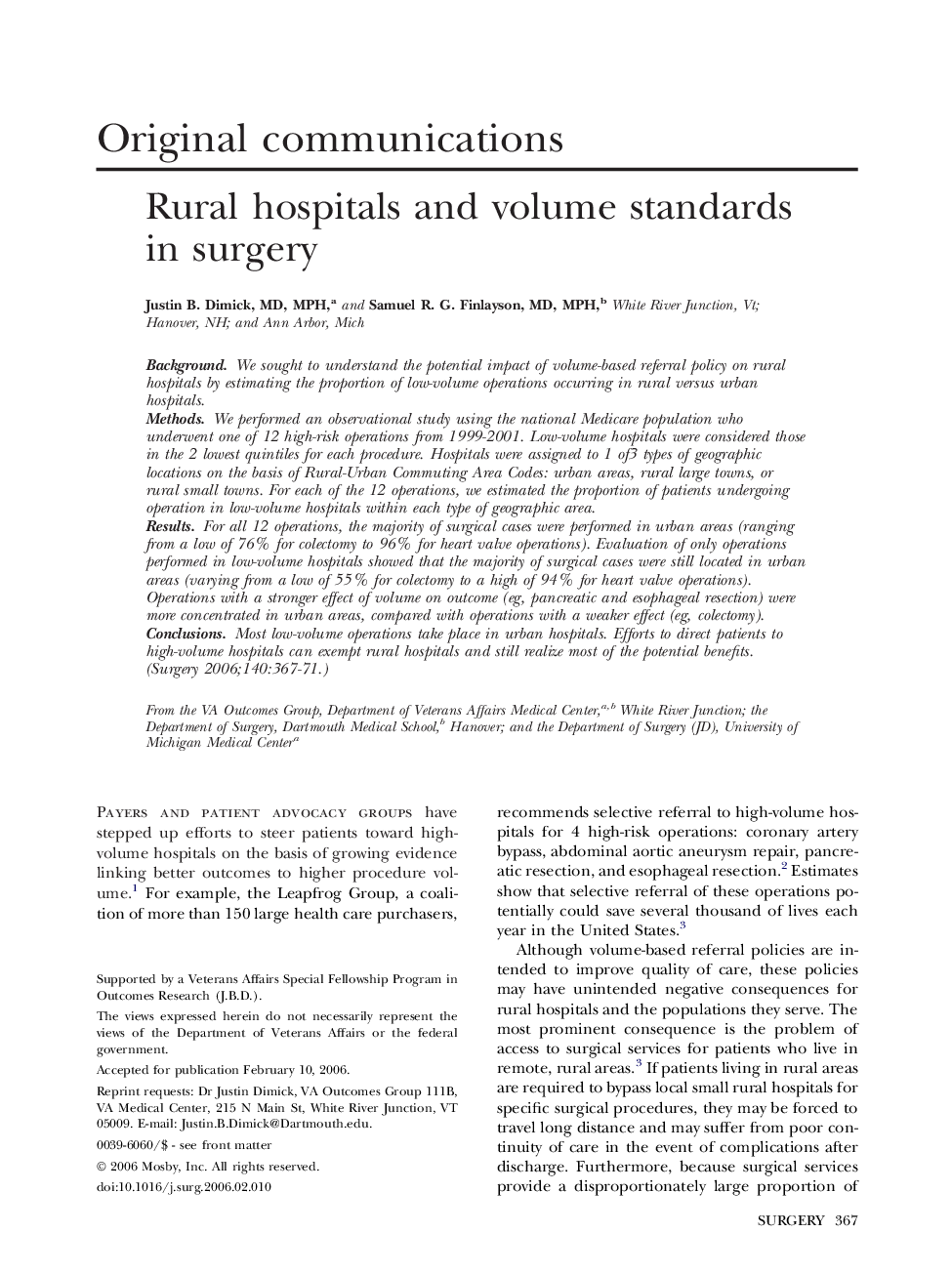| Article ID | Journal | Published Year | Pages | File Type |
|---|---|---|---|---|
| 4309824 | Surgery | 2006 | 5 Pages |
BackgroundWe sought to understand the potential impact of volume-based referral policy on rural hospitals by estimating the proportion of low-volume operations occurring in rural versus urban hospitals.MethodsWe performed an observational study using the national Medicare population who underwent one of 12 high-risk operations from 1999-2001. Low-volume hospitals were considered those in the 2 lowest quintiles for each procedure. Hospitals were assigned to 1 of3 types of geographic locations on the basis of Rural-Urban Commuting Area Codes: urban areas, rural large towns, or rural small towns. For each of the 12 operations, we estimated the proportion of patients undergoing operation in low-volume hospitals within each type of geographic area.ResultsFor all 12 operations, the majority of surgical cases were performed in urban areas (ranging from a low of 76% for colectomy to 96% for heart valve operations). Evaluation of only operations performed in low-volume hospitals showed that the majority of surgical cases were still located in urban areas (varying from a low of 55% for colectomy to a high of 94% for heart valve operations). Operations with a stronger effect of volume on outcome (eg, pancreatic and esophageal resection) were more concentrated in urban areas, compared with operations with a weaker effect (eg, colectomy).ConclusionsMost low-volume operations take place in urban hospitals. Efforts to direct patients to high-volume hospitals can exempt rural hospitals and still realize most of the potential benefits.
